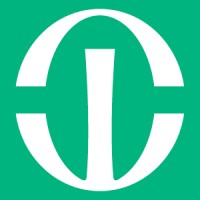
Rush University Medical Center Company Cyber Security Posture
rush.eduRush University Medical Center is an academic medical center that includes a 671-bed hospital serving adults and children, the 61-bed Johnston R. Bowman Health Center and Rush University. Rush University is home to one of the first medical colleges in the Midwest and one of the nation's top-ranked nursing colleges, as well as graduate programs in allied health, health systems management and biomedical research. The medical center also offers more than 70 highly selective residency and fellowship programs in medical and surgical specialties and subspecialties. For more than 170 years, Rush has been leading the way in developing innovative and often life-saving treatments. Today, Rush is a thriving center for basic and clinical research, with physicians and scientists involved in hundreds of research projects developing and testing the effectiveness and safety of new therapies and medical devices. In addition to its mission in patient care, education and research, Rush maintains a strong commitment to the community. Rush reaches out to the Chicago community through such offerings as the Rush Community Services Initiatives Program, an umbrella for several student-led outreach programs designed to address the social and health care needs of residents in neighboring communities.
RUMC Company Details
rush-university-medical-center
11489 employees
114182.0
62
Hospitals and Health Care
rush.edu
Scan still pending
RUS_2235174
In-progress
Between 800 and 900
This score is AI-generated and less favored by cyber insurers, who prefer the TPRM score.
 RUMC Global Score
RUMC Global Score.png)

Rush University Medical Center Company Scoring based on AI Models
| Model Name | Date | Description | Current Score Difference | Score |
|---|---|---|---|---|
| AVERAGE-Industry | 03-12-2025 | This score represents the average cybersecurity rating of companies already scanned within the same industry. It provides a benchmark to compare an individual company's security posture against its industry peers. | N/A | Between 800 and 900 |
Rush University Medical Center Company Cyber Security News & History
| Entity | Type | Severity | Impact | Seen | Url ID | Details | View |
|---|---|---|---|---|---|---|---|
| Rush University Medical Center | Data Leak | 60 | 4 | 01/2019 | RUS31612323 | Link | |
Rankiteo Explanation : Attack with significant impact with customers data leaksDescription: Rush University Hospital notified that they have been hit by a data breach that affected 908 patients, was coded as an Unauthorized Access/Disclosure incident with data located in paper/film format. The personal information of about 45,000 Rush patients information compromised in a data breach, the health system revealed in a recent financial filing. The compromised information includes names, addresses, birthdays, Social Security numbers and health insurance information, according to the filing. The data did not include medical information, rush said that to its knowledge, none of the information had been misused. | |||||||
Rush University Medical Center Company Subsidiaries

Rush University Medical Center is an academic medical center that includes a 671-bed hospital serving adults and children, the 61-bed Johnston R. Bowman Health Center and Rush University. Rush University is home to one of the first medical colleges in the Midwest and one of the nation's top-ranked nursing colleges, as well as graduate programs in allied health, health systems management and biomedical research. The medical center also offers more than 70 highly selective residency and fellowship programs in medical and surgical specialties and subspecialties. For more than 170 years, Rush has been leading the way in developing innovative and often life-saving treatments. Today, Rush is a thriving center for basic and clinical research, with physicians and scientists involved in hundreds of research projects developing and testing the effectiveness and safety of new therapies and medical devices. In addition to its mission in patient care, education and research, Rush maintains a strong commitment to the community. Rush reaches out to the Chicago community through such offerings as the Rush Community Services Initiatives Program, an umbrella for several student-led outreach programs designed to address the social and health care needs of residents in neighboring communities.
Access Data Using Our API

Get company history
.png)
RUMC Cyber Security News
Rush Adopts CLEAR Easy-to-Use Patient Data Security
Rush University System for Health is partnering with CLEAR, the secure identity company, to make the health care experience simpler for patients.
Chicago's Rush rolls out ambient AI after successful pilot
In the test, 74% of clinicians said the ambient and genAI technology reduced their levels of burnout and 95% wanted to continue using the ...
The Neighborhood Hotel Celebrates One-Year Anniversary Serving Rush Hospital and Illinois Medical District
The Neighborhood Hotel Little Italy proudly marks one year of serving the healthcare professionals, patients, and families connected to Rush University Medical ...
HIMSS25 roundup: Zoom launches healthcare AI betas; Teladoc enhances Prism with AI
Zoom has released two AI features for healthcare. Zoom launched the public beta of Zoom Workplace for Clinicians, which includes an ambient ...
Member News October 2024
Violence Escalates against Surgeons and Other Healthcare Workers. Discover strategies for prevention and mitigation of violence against ...
Rush University Medical Center Notifies 45,000 Patients of PHI Incident
Rush University Medical Center is notifying approximately 45,000 patients that their PHI has been exposed as a result of a data incident at a ...
AHA podcast: How the FBI is confronting the rise of cyberattacks in health care
Bryan Smith, recently retired chief of the FBI's Cyber Criminal Operations Section, discusses the challenge of protecting the nation's ...
Rush University Medical Center to pay $2.95 million in ERISA settlement
The terms of a Rush University Medical Center settlement with former 403(b) participants alleging plan mismanagement have been announced.
Rush Launches Program to Scale RPM for Chronic Conditions Management
Rush's main goal for this pilot is to get to a level where the health system can say it has implemented RPM technology as “a true population ...

RUMC Similar Companies
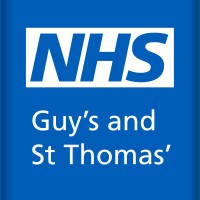
Guy's and St Thomas' NHS Foundation Trust
One of the largest Trusts in the UK, Guy’s and St Thomas’ NHS Foundation Trust comprises five of the UK’s best known hospitals – Guy’s, St Thomas’, Evelina London Children’s Hospital, Royal Brompton and Harefield – as well as community services in Lambeth and Southwark, all with a long history of hi
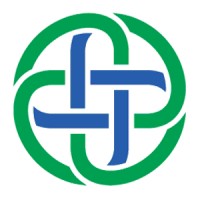
Texas Health Resources
At Texas Health Resources, our mission is to improve the health of the people in the communities we serve. We are one of the largest faith-based, nonprofit health systems in the United States with a team of more than 28,000 employees of wholly owned/operated facilities and consolidated joint ventur
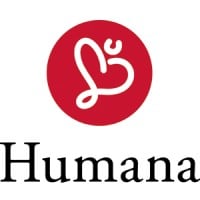
Humana AB
Humana är ett ledande nordiskt omsorgsföretag som erbjuder tjänster inom individ- och familjeomsorg, personlig assistans, äldreomsorg och bostäder med särskild service enligt LSS. Humana har cirka 16 000 engagerade medarbetare i Sverige, Norge, Finland och Danmark som utför omsorgstjänster

UC San Diego Health
UC San Diego Health and Health Sciences has been caring for the community and producing physicians for more than 50 years. In 1966, we established our first medical center. Two years later, in 1968, UC San Diego School of Medicine opened for business. Today, UC San Diego Health is the only academic
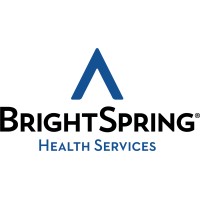
BrightSpring Health Services
BrightSpring is the parent company of a family of services and brands that provides clinical, nonclinical, pharmacy and ancillary care services for people of all ages, health and skill levels across home and community settings. The company is a leading provider of diversified home and community-ba
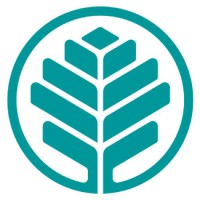
Atrium Health
Atrium Health is a nationally recognized leader in shaping health outcomes through innovative research, education and compassionate patient care. Based in Charlotte, North Carolina, Atrium Health is proud to be a part of Advocate Health, the third-largest nonprofit health system, serving nearly 6 mi

Frequently Asked Questions (FAQ) on Cybersecurity Incidents
RUMC CyberSecurity History Information
Total Incidents: According to Rankiteo, RUMC has faced 1 incidents in the past.
Incident Types: The types of cybersecurity incidents that have occurred include ['Data Leak'].
Total Financial Loss: The total financial loss from these incidents is estimated to be {total_financial_loss}.
Cybersecurity Posture: The company's overall cybersecurity posture is described as Rush University Medical Center is an academic medical center that includes a 671-bed hospital serving adults and children, the 61-bed Johnston R. Bowman Health Center and Rush University. Rush University is home to one of the first medical colleges in the Midwest and one of the nation's top-ranked nursing colleges, as well as graduate programs in allied health, health systems management and biomedical research. The medical center also offers more than 70 highly selective residency and fellowship programs in medical and surgical specialties and subspecialties. For more than 170 years, Rush has been leading the way in developing innovative and often life-saving treatments. Today, Rush is a thriving center for basic and clinical research, with physicians and scientists involved in hundreds of research projects developing and testing the effectiveness and safety of new therapies and medical devices. In addition to its mission in patient care, education and research, Rush maintains a strong commitment to the community. Rush reaches out to the Chicago community through such offerings as the Rush Community Services Initiatives Program, an umbrella for several student-led outreach programs designed to address the social and health care needs of residents in neighboring communities..
Detection and Response: The company detects and responds to cybersecurity incidents through {description_of_detection_and_response_process}.
Incident Details
Incident 1: Ransomware Attack
Title: {Incident_Title}
Description: {Brief_description_of_the_incident}
Date Detected: {Detection_Date}
Date Publicly Disclosed: {Disclosure_Date}
Date Resolved: {Resolution_Date}
Type: {Type_of_Attack}
Attack Vector: {Attack_Vector}
Vulnerability Exploited: {Vulnerability}
Threat Actor: {Threat_Actor}
Motivation: {Motivation}
Incident 2: Data Breach
Title: {Incident_Title}
Description: {Brief_description_of_the_incident}
Date Detected: {Detection_Date}
Date Publicly Disclosed: {Disclosure_Date}
Date Resolved: {Resolution_Date}
Type: {Type_of_Attack}
Attack Vector: {Attack_Vector}
Vulnerability Exploited: {Vulnerability}
Threat Actor: {Threat_Actor}
Motivation: {Motivation}
Common Attack Types: As of now, the company has not encountered any reported incidents involving common cyberattacks.
Identification of Attack Vectors: The company identifies the attack vectors used in incidents through {description_of_identification_process}.
Impact of the Incidents
Incident 1: Ransomware Attack
Financial Loss: {Financial_Loss}
Data Compromised: {Data_Compromised}
Systems Affected: {Systems_Affected}
Downtime: {Downtime}
Operational Impact: {Operational_Impact}
Conversion Rate Impact: {Conversion_Rate_Impact}
Revenue Loss: {Revenue_Loss}
Customer Complaints: {Customer_Complaints}
Brand Reputation Impact: {Brand_Reputation_Impact}
Legal Liabilities: {Legal_Liabilities}
Identity Theft Risk: {Identity_Theft_Risk}
Payment Information Risk: {Payment_Information_Risk}
Incident 2: Data Breach
Financial Loss: {Financial_Loss}
Data Compromised: {Data_Compromised}
Systems Affected: {Systems_Affected}
Downtime: {Downtime}
Operational Impact: {Operational_Impact}
Conversion Rate Impact: {Conversion_Rate_Impact}
Revenue Loss: {Revenue_Loss}
Customer Complaints: {Customer_Complaints}
Brand Reputation Impact: {Brand_Reputation_Impact}
Legal Liabilities: {Legal_Liabilities}
Identity Theft Risk: {Identity_Theft_Risk}
Payment Information Risk: {Payment_Information_Risk}
Average Financial Loss: The average financial loss per incident is {average_financial_loss}.
Commonly Compromised Data Types: The types of data most commonly compromised in incidents are {list_of_commonly_compromised_data_types}.
Incident 1: Ransomware Attack
Entity Name: {Entity_Name}
Entity Type: {Entity_Type}
Industry: {Industry}
Location: {Location}
Size: {Size}
Customers Affected: {Customers_Affected}
Incident 2: Data Breach
Entity Name: {Entity_Name}
Entity Type: {Entity_Type}
Industry: {Industry}
Location: {Location}
Size: {Size}
Customers Affected: {Customers_Affected}
Response to the Incidents
Incident 1: Ransomware Attack
Incident Response Plan Activated: {Yes/No}
Third Party Assistance: {Yes/No}
Law Enforcement Notified: {Yes/No}
Containment Measures: {Containment_Measures}
Remediation Measures: {Remediation_Measures}
Recovery Measures: {Recovery_Measures}
Communication Strategy: {Communication_Strategy}
Adaptive Behavioral WAF: {Adaptive_Behavioral_WAF}
On-Demand Scrubbing Services: {On_Demand_Scrubbing_Services}
Network Segmentation: {Network_Segmentation}
Enhanced Monitoring: {Enhanced_Monitoring}
Incident 2: Data Breach
Incident Response Plan Activated: {Yes/No}
Third Party Assistance: {Yes/No}
Law Enforcement Notified: {Yes/No}
Containment Measures: {Containment_Measures}
Remediation Measures: {Remediation_Measures}
Recovery Measures: {Recovery_Measures}
Communication Strategy: {Communication_Strategy}
Adaptive Behavioral WAF: {Adaptive_Behavioral_WAF}
On-Demand Scrubbing Services: {On_Demand_Scrubbing_Services}
Network Segmentation: {Network_Segmentation}
Enhanced Monitoring: {Enhanced_Monitoring}
Incident Response Plan: The company's incident response plan is described as {description_of_incident_response_plan}.
Third-Party Assistance: The company involves third-party assistance in incident response through {description_of_third_party_involvement}.
Data Breach Information
Incident 2: Data Breach
Type of Data Compromised: {Type_of_Data}
Number of Records Exposed: {Number_of_Records}
Sensitivity of Data: {Sensitivity_of_Data}
Data Exfiltration: {Yes/No}
Data Encryption: {Yes/No}
File Types Exposed: {File_Types}
Personally Identifiable Information: {Yes/No}
Prevention of Data Exfiltration: The company takes the following measures to prevent data exfiltration: {description_of_prevention_measures}.
Handling of PII Incidents: The company handles incidents involving personally identifiable information (PII) through {description_of_handling_process}.
Ransomware Information
Incident 1: Ransomware Attack
Ransom Demanded: {Ransom_Amount}
Ransom Paid: {Ransom_Paid}
Ransomware Strain: {Ransomware_Strain}
Data Encryption: {Yes/No}
Data Exfiltration: {Yes/No}
Ransom Payment Policy: The company's policy on paying ransoms in ransomware incidents is described as {description_of_ransom_payment_policy}.
Data Recovery from Ransomware: The company recovers data encrypted by ransomware through {description_of_data_recovery_process}.
Regulatory Compliance
Incident 1: Ransomware Attack
Regulations Violated: {Regulations_Violated}
Fines Imposed: {Fines_Imposed}
Legal Actions: {Legal_Actions}
Regulatory Notifications: {Regulatory_Notifications}
Incident 2: Data Breach
Regulations Violated: {Regulations_Violated}
Fines Imposed: {Fines_Imposed}
Legal Actions: {Legal_Actions}
Regulatory Notifications: {Regulatory_Notifications}
Regulatory Frameworks: The company complies with the following regulatory frameworks regarding cybersecurity: {list_of_regulatory_frameworks}.
Ensuring Regulatory Compliance: The company ensures compliance with regulatory requirements through {description_of_compliance_measures}.
Lessons Learned and Recommendations
Incident 1: Ransomware Attack
Lessons Learned: {Lessons_Learned}
Incident 2: Data Breach
Lessons Learned: {Lessons_Learned}
Incident 1: Ransomware Attack
Recommendations: {Recommendations}
Incident 2: Data Breach
Recommendations: {Recommendations}
Key Lessons Learned: The key lessons learned from past incidents are {list_of_key_lessons_learned}.
Implemented Recommendations: The company has implemented the following recommendations to improve cybersecurity: {list_of_implemented_recommendations}.
References
Additional Resources: Stakeholders can find additional resources on cybersecurity best practices at {list_of_additional_resources}.
Investigation Status
Incident 1: Ransomware Attack
Investigation Status: {Investigation_Status}
Incident 2: Data Breach
Investigation Status: {Investigation_Status}
Communication of Investigation Status: The company communicates the status of incident investigations to stakeholders through {description_of_communication_process}.
Stakeholder and Customer Advisories
Incident 1: Ransomware Attack
Stakeholder Advisories: {Stakeholder_Advisories}
Customer Advisories: {Customer_Advisories}
Incident 2: Data Breach
Stakeholder Advisories: {Stakeholder_Advisories}
Customer Advisories: {Customer_Advisories}
Advisories Provided: The company provides the following advisories to stakeholders and customers following an incident: {description_of_advisories_provided}.
Initial Access Broker
Incident 1: Ransomware Attack
Entry Point: {Entry_Point}
Reconnaissance Period: {Reconnaissance_Period}
Backdoors Established: {Backdoors_Established}
High Value Targets: {High_Value_Targets}
Data Sold on Dark Web: {Yes/No}
Incident 2: Data Breach
Entry Point: {Entry_Point}
Reconnaissance Period: {Reconnaissance_Period}
Backdoors Established: {Backdoors_Established}
High Value Targets: {High_Value_Targets}
Data Sold on Dark Web: {Yes/No}
Monitoring and Mitigation of Initial Access Brokers: The company monitors and mitigates the activities of initial access brokers through {description_of_monitoring_and_mitigation_measures}.
Post-Incident Analysis
Incident 1: Ransomware Attack
Root Causes: {Root_Causes}
Corrective Actions: {Corrective_Actions}
Incident 2: Data Breach
Root Causes: {Root_Causes}
Corrective Actions: {Corrective_Actions}
Post-Incident Analysis Process: The company's process for conducting post-incident analysis is described as {description_of_post_incident_analysis_process}.
Corrective Actions Taken: The company has taken the following corrective actions based on post-incident analysis: {list_of_corrective_actions_taken}.
Additional Questions
General Information
Ransom Payment History: The company has {paid/not_paid} ransoms in the past.
Last Ransom Demanded: The amount of the last ransom demanded was {last_ransom_amount}.
Last Attacking Group: The attacking group in the last incident was {last_attacking_group}.
Incident Details
Most Recent Incident Detected: The most recent incident detected was on {most_recent_incident_detected_date}.
Most Recent Incident Publicly Disclosed: The most recent incident publicly disclosed was on {most_recent_incident_publicly_disclosed_date}.
Most Recent Incident Resolved: The most recent incident resolved was on {most_recent_incident_resolved_date}.
Impact of the Incidents
Highest Financial Loss: The highest financial loss from an incident was {highest_financial_loss}.
Most Significant Data Compromised: The most significant data compromised in an incident was {most_significant_data_compromised}.
Most Significant System Affected: The most significant system affected in an incident was {most_significant_system_affected}.
Response to the Incidents
Third-Party Assistance in Most Recent Incident: The third-party assistance involved in the most recent incident was {third_party_assistance_in_most_recent_incident}.
Containment Measures in Most Recent Incident: The containment measures taken in the most recent incident were {containment_measures_in_most_recent_incident}.
Data Breach Information
Most Sensitive Data Compromised: The most sensitive data compromised in a breach was {most_sensitive_data_compromised}.
Number of Records Exposed: The number of records exposed in the most significant breach was {number_of_records_exposed}.
Ransomware Information
Highest Ransom Demanded: The highest ransom demanded in a ransomware incident was {highest_ransom_demanded}.
Highest Ransom Paid: The highest ransom paid in a ransomware incident was {highest_ransom_paid}.
Regulatory Compliance
Highest Fine Imposed: The highest fine imposed for a regulatory violation was {highest_fine_imposed}.
Most Significant Legal Action: The most significant legal action taken for a regulatory violation was {most_significant_legal_action}.
Lessons Learned and Recommendations
Most Significant Lesson Learned: The most significant lesson learned from past incidents was {most_significant_lesson_learned}.
Most Significant Recommendation Implemented: The most significant recommendation implemented to improve cybersecurity was {most_significant_recommendation_implemented}.
References
Most Recent Source: The most recent source of information about an incident is {most_recent_source}.
Most Recent URL for Additional Resources: The most recent URL for additional resources on cybersecurity best practices is {most_recent_url}.
Investigation Status
Current Status of Most Recent Investigation: The current status of the most recent investigation is {current_status_of_most_recent_investigation}.
Stakeholder and Customer Advisories
Most Recent Stakeholder Advisory: The most recent stakeholder advisory issued was {most_recent_stakeholder_advisory}.
Most Recent Customer Advisory: The most recent customer advisory issued was {most_recent_customer_advisory}.
Initial Access Broker
Most Recent Entry Point: The most recent entry point used by an initial access broker was {most_recent_entry_point}.
Most Recent Reconnaissance Period: The most recent reconnaissance period for an incident was {most_recent_reconnaissance_period}.
Post-Incident Analysis
Most Significant Root Cause: The most significant root cause identified in post-incident analysis was {most_significant_root_cause}.
Most Significant Corrective Action: The most significant corrective action taken based on post-incident analysis was {most_significant_corrective_action}.
What Do We Measure?
















Every week, Rankiteo analyzes billions of signals to give organizations a sharper, faster view of emerging risks. With deeper, more actionable intelligence at their fingertips, security teams can outpace threat actors, respond instantly to Zero-Day attacks, and dramatically shrink their risk exposure window.
These are some of the factors we use to calculate the overall score:
Identify exposed access points, detect misconfigured SSL certificates, and uncover vulnerabilities across the network infrastructure.
Gain visibility into the software components used within an organization to detect vulnerabilities, manage risk, and ensure supply chain security.
Monitor and manage all IT assets and their configurations to ensure accurate, real-time visibility across the company's technology environment.
Leverage real-time insights on active threats, malware campaigns, and emerging vulnerabilities to proactively defend against evolving cyberattacks.




